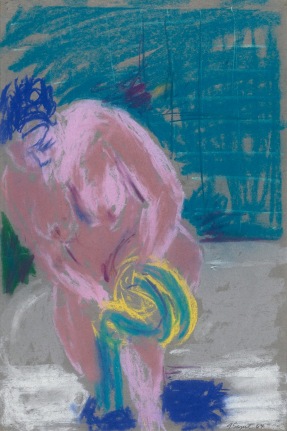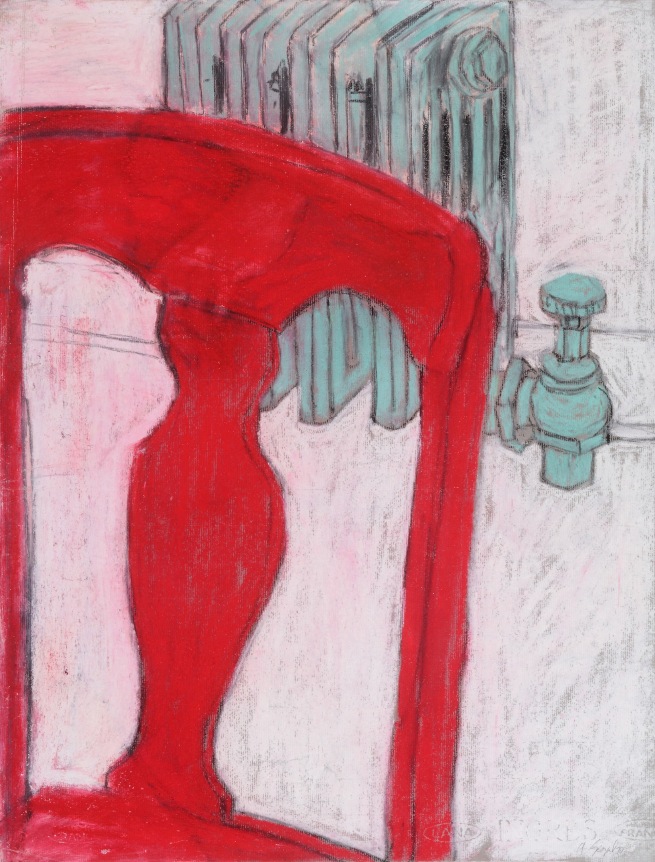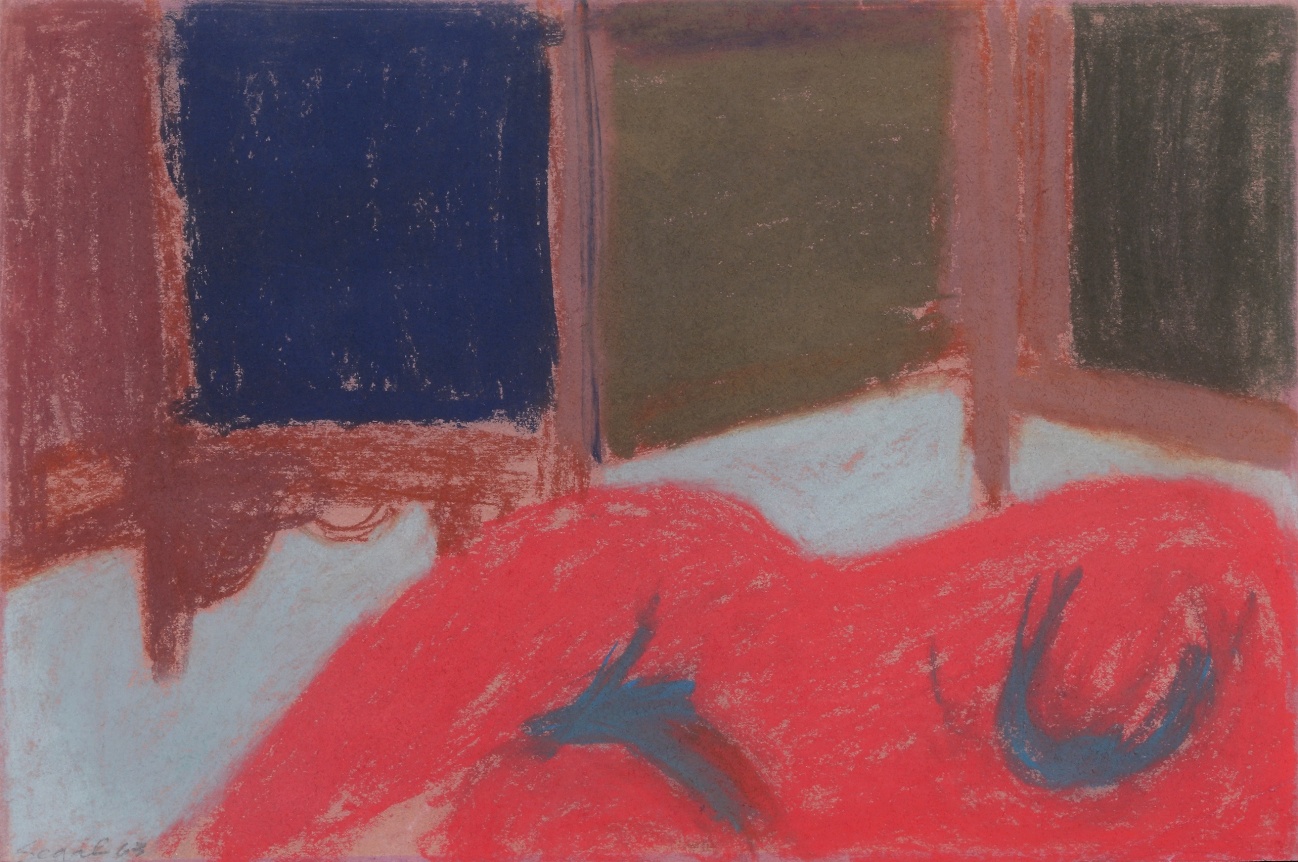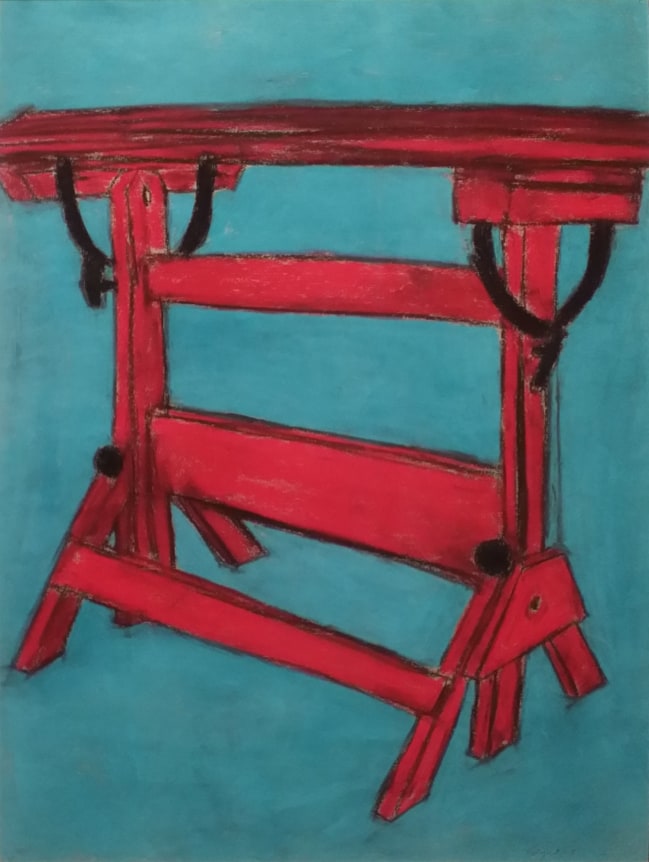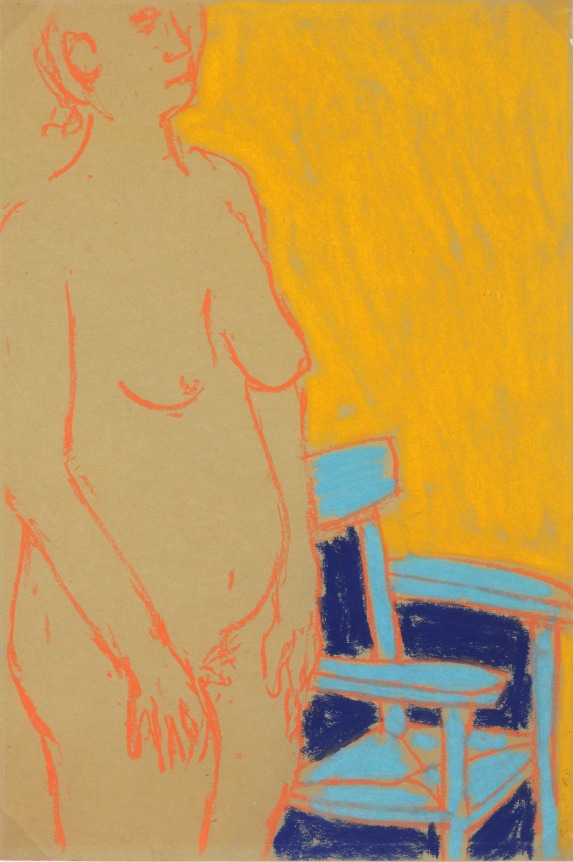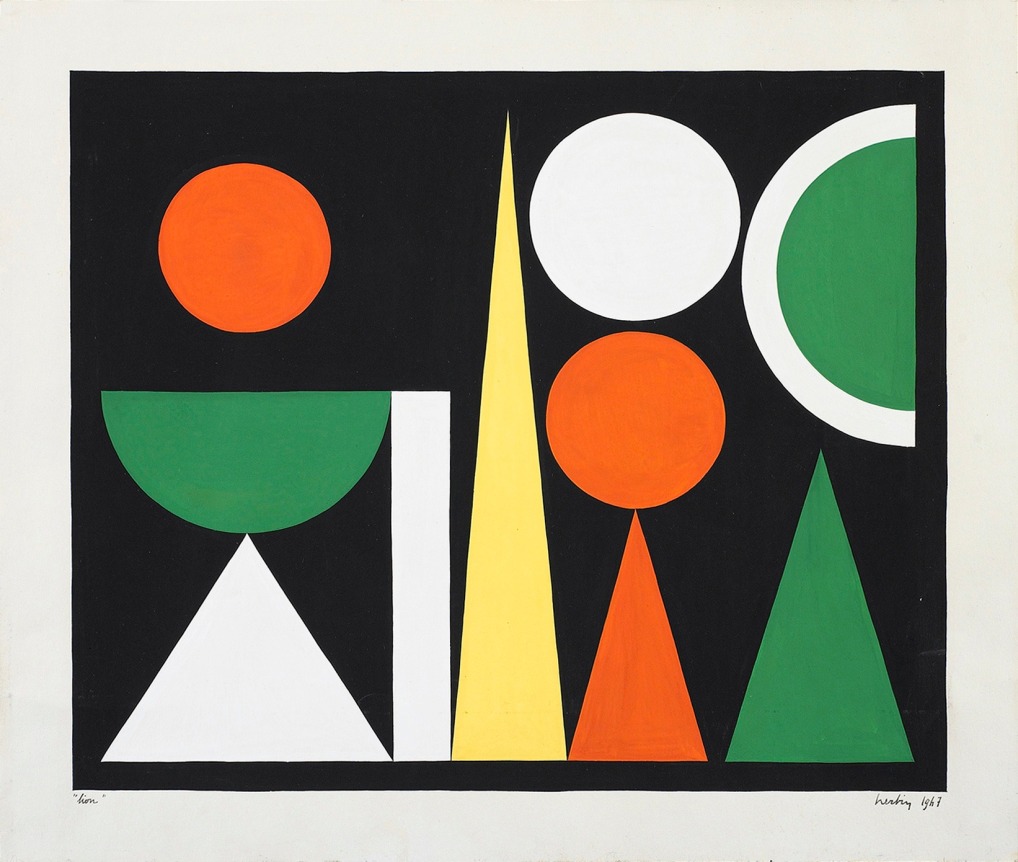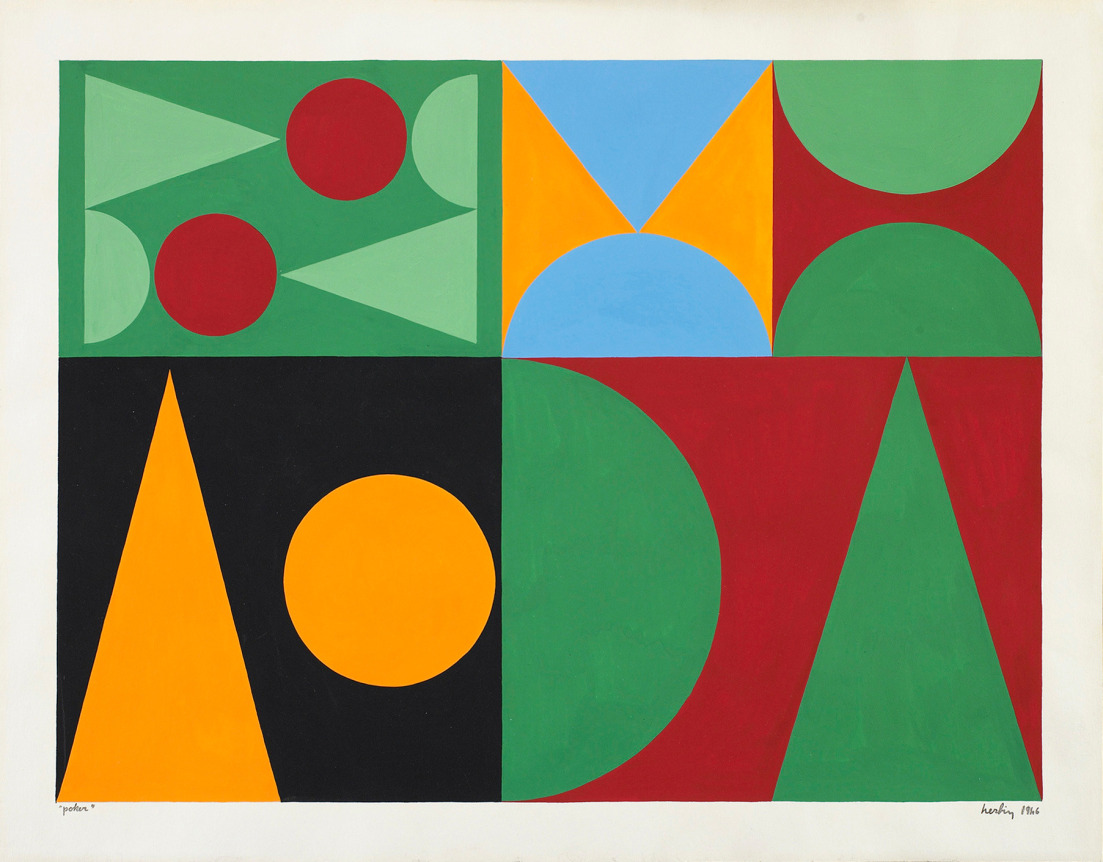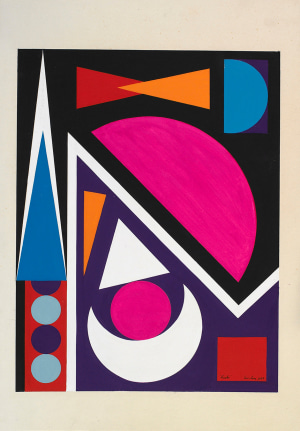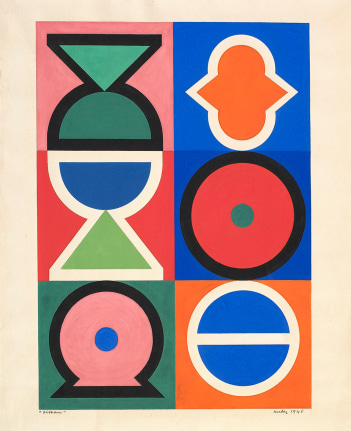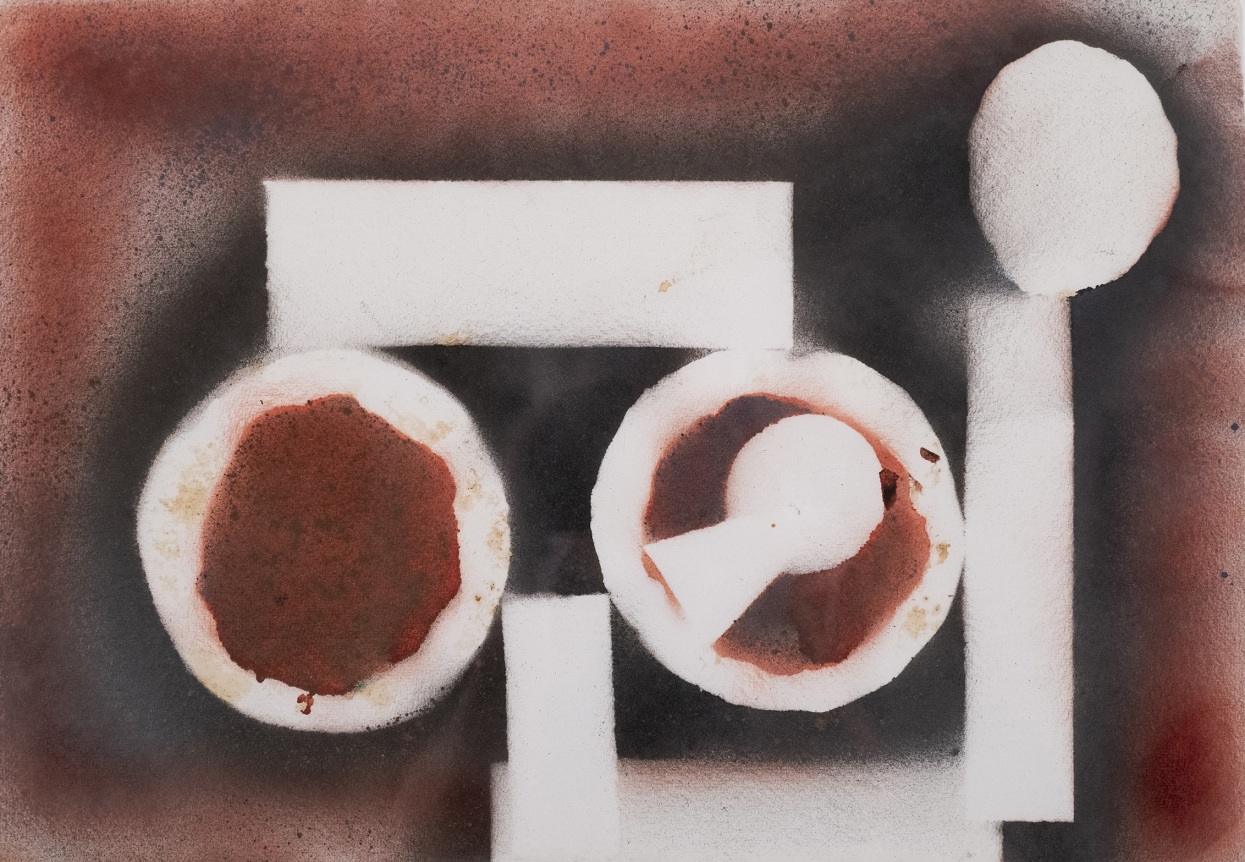For its third in a series of summer shows Wall Paper
Jill Newhouse Gallery presents a selection of mid-century works by August Herbin, George Segal and David Smith.
Auguste Herbin (1882-1960) was a leading figure in the development of geometric abstraction in Europe. He began as a Fauve, showing with Matisse and Derain at the Salon des Indépendants in 1906, and in 1909 moved to the famous Montmartre gathering place the Bateau Lavoir, where he met Picasso, Braque and Gris. By 1910, Herbin’s colorful proto-cubist works were being shown beside paintings by Leger, Gleizes, and Metzinger, and in 1918, the reknowned art dealer Léonce Rosenberg gave him a solo exhibition. In 1931, Herbin’s commitment to abstraction and non-objective art culminated in his founding with de Stijl artist George Vantongerloo, the wide-ranging Abstraction-Création Group and in 1949 to the publication of L’art non-figuratif non-objectif.
George Segal (1924 –2000) While Segal is best known for his white plaster sculptures of figures, sometimes (especially in the 1960s) made by literally wrapping a model in plaster bandages, he actually began his career as a painter. He developed a particular interest in pastel as early as the 1960s, intrigued as he put it, by their “brilliant color and juiciness.”
In his sculpture, Segal would often create tableaus that placed figures among the objects in his studio like his drawing table, his red ladder-back chair, and the radiator. In his pastels, these markers of the studio environment and the model and the furnishings, take center stage. They show how Segal identified, composed, and depicted his studio life in different ways at different moments in his career.
David Smith (1906-1965) The important American sculptor David Smith is best known as an Abstract Expressionist whose work gave three-dimensional form to the paintings of the period. Before turning to art, Smith had worked building cars in a Studebaker factory where he was trained in using industrial materials and techniques, including welding. In his iconic sculptural pieces, he used the technique of welding to create sculpture that was “a drawing in space.” He added daring color, and instead of spraying it on as he would with works on paper, he would hand paint on the metal using a brush, lending these sculptures the formal properties and texture of paintings.
By 1957, Smith began using enamel paint from the newly available commercial aerosol cans, combining it with the use of found objects to make works on paper called Sprays. By laying three dimensional objects on the paper and spraying paint as in the act of stenciling, Smith created a new type of sculptural drawing.

